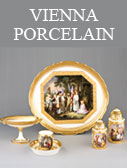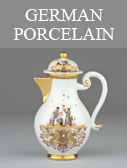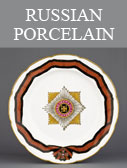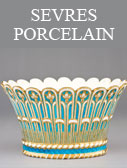 |
 |
 |
 |
S├©vres porcelain manufactory
The beginnings of S├©vres porcelain go back to 1740 when two runaway workers from Chantilly manufactory, claiming to know the secret of making soft-paste porcelain, succeeded in obtaining support from a group of financiers close to the court of Louis XV. In 1745 the manufactory was granted the exclusive royal privilege in France to make products in the manner of Meissen porcelain, that is painted with human figures, using unlimited palette of colours and gilding.
During the early years of mostly experimental production, the factory, originally located in the castle of Vincennes on the eastern outskirts of Paris, was unprofitable and in 1751 the company was reorganized with the King purchasing one quarter of the shares. In August 1753 the manufactory officialy became the Manufacture du roi and was permitted to mark its wares with the royal cipher of interlaced Ls. This decision was heavily influenced by king's mistress, Madame de Pompadour, who became the manufactory's principal patron and customer.
In 1756 the production was moved to a site in S├©vres, adjacent to her property of Bellevue, conveniently sited on the road between Paris and Versailles. In November 1759 Louis XV purchased all the shares of the manufactory and until the Revolution the factory remained the property of the French kings.











